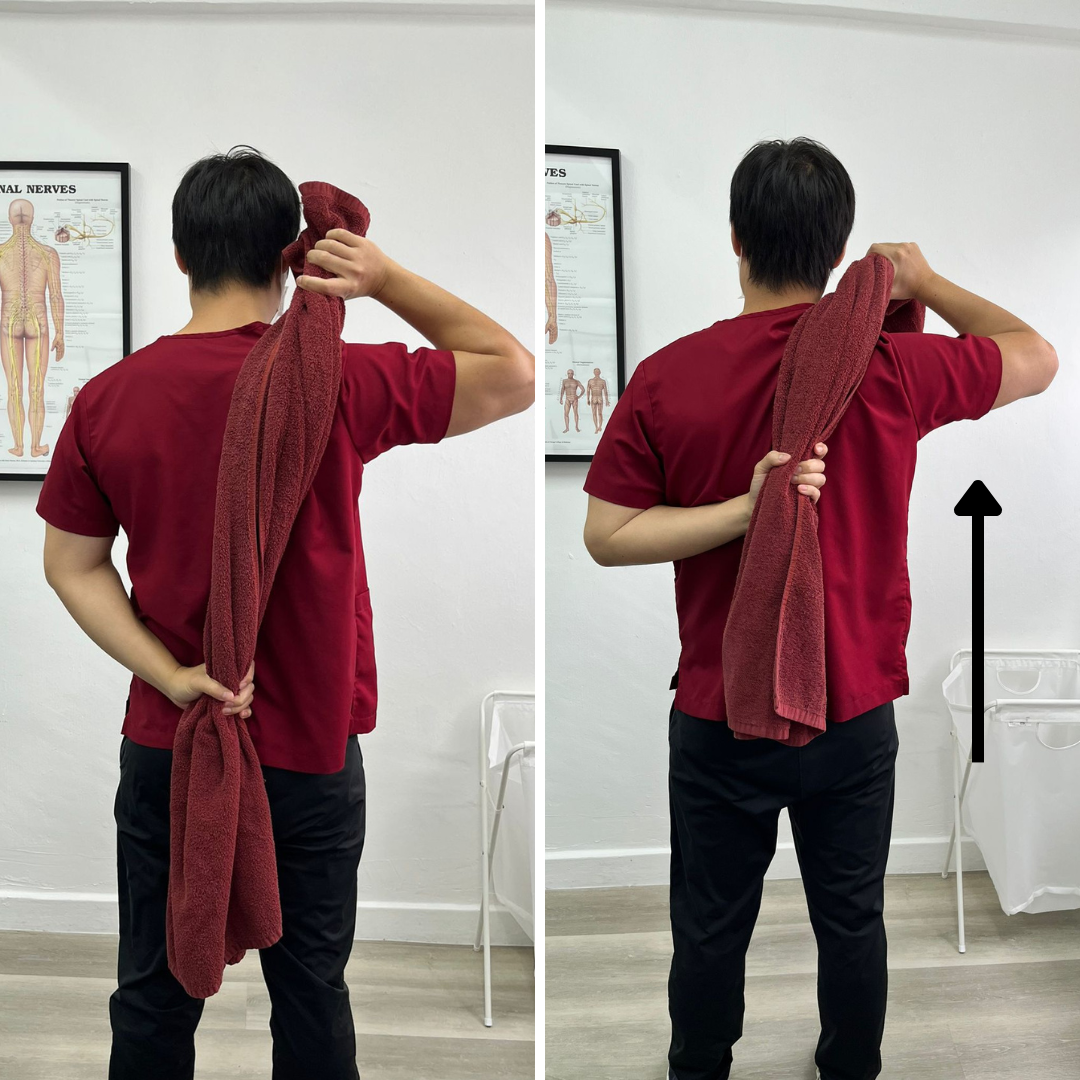
What is a Frozen Shoulder?
Frozen shoulder, “also known as adhesive capsulitis”, is associated with progressive pain and stiffness in the shoulder. It is an inflammatory condition which causes the formation of scar tissues in the shoulder over time, leading to decreased range of motion in the shoulder.
In Traditional Chinese Medicine, frozen shoulder is also termed as 五十肩 (wû shí jīan) or “50 year old shoulder” as this is a common clinical presentation in menopausal women.
Types of Frozen Shoulder
Typically they fall into 2 different categories, primary or secondary frozen shoulder.
Primary frozen shoulder occurs without any attributable reason and there is no history of trauma. The cause is not fully understood.
Primary frozen shoulder is also known as idiopathic frozen shoulder and is characterized by insidious and progressive onset of pain and loss of shoulder range of motion.
Secondary frozen shoulder occurs from a known cause such as from an injury or following a surgery. The shoulder may be painful to move due to inflammation after an injury or post surgery which may lead to progressive stiffening of the shoulder joint.
Symptoms
Patients with frozen shoulder generally experience a gradual increase in pain around the affected shoulder, a decrease in available shoulder movement and might have pain during sleep. This might cause issues with activities of daily living like overhead movements, grooming and hand behind back movements. The symptoms experienced would depend on the stage of the condition. With frozen shoulder, there are typically three stages:
Stage 1 Freezing: A slow onset of pain that can increasingly worsen over 6 weeks to 9 months. As the pain worsens, the shoulder slowly loses range. Pain can also interrupt sleep at night.
Stage 2 Frozen: Pain will slowly reduce with time, but stiffness remains. This stage generally lasts for 4 months, up to a year.
Stage 3 Thawing: This stage is marked by spontaneous improvement in the range of motion, pain and strength. This can take anywhere from 5 to 24 months to happen.
Diagnosis
For an accurate diagnosis, the therapist will first discuss with the patient regarding the symptoms experienced and any relevant medical conditions. A physical examination of the patient will then be administered to check the available active and passive movement of the affected shoulder. X-rays or MRI might also be done to rule out other causes first such as any bone or muscle related conditions before concluding on a frozen shoulder diagnosis.
Treatment
Non-steroidal anti-inflammatory drugs (NSAIDS) and other painkillers might be prescribed by your doctor to manage the pain and inflammation. If pain is more severe, your doctor might even suggest a steroid injection. Different treatment options are available but mostly cater to reducing pain and inflammation during the initial stage.
Primary treatment for frozen shoulder is still physiotherapy and consistent exercise by the patient to maintain the shoulder movement and to strengthen the shoulder muscles.
If you do have the condition, these are some of the exercises you can do to help with your recovery.
- Shoulder Wall Climb
- Face the wall, put affected arm on the wall and slowly inch up the wall using your fingers to reach up the wall as far as you can within tolerable pain limits
- Repeat same exercise from the side position
- Repeat movement 10 times


- Posterior Cuff Stretch
- To stretch out the muscles at the back of the shoulder
- Lie on your side with the affected shoulder in contact with the bed
- Position the shoulder about 90 degrees perpendicular to your body
- Reach over with your upper arm and push your arm down by the wrist
- Hold this position for 30s, feel the stretch along the back of the shoulder within tolerable pain limits
- Repeat 5 to 10 times



- Towel Stretch Exercise
- In standing position, put the affected arm behind your back, healthy arm above your head
- Grab hold of the towel with both arms as shown in the photo
- Try to initiate the movement with the affected arm first then gently assist by pulling with the healthy arm
- Hold this position for 2 to 5 seconds within tolerable pain limits
- Repeat 10 times
- This exercise will likely to be the most painful, a good tip will be to do all the previous exercises first to warm up and then end off with this exercise

Additional Tips
This is a condition which may take a long time to recover from, so it is important to be diligent with the exercises and also be patient with yourself. It is going to take some time before you see improvement in your shoulder movement.
It can be both physically and mentally reassuring if you have a physiotherapist to assist you in your recovery along the different stages of the frozen shoulder in order to better manage the pain and stiffness.
At Physio & Sole, our trusted team of physiotherapists are able to assist in treating this condition along with other musculoskeletal pains. Book an appointment with any of Physio & Sole’s branches that are located islandwide.






